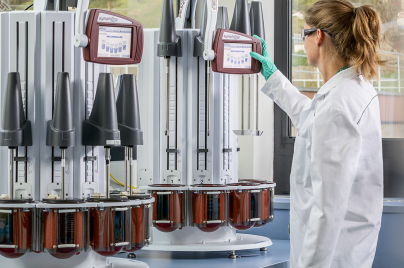Understanding the health risks of high LDL cholesterol
Our scientists are investigating a potential new approach to reduce low-density lipoprotein (LDL) cholesterol in order to help lower the risk of heart attacks and strokes
October 30, 2025

What does high cholesterol mean?
Cholesterol is obtained from food and produced by the liver. It carries out several important functions in our body, including the synthesis of new cells, some hormones and substances that help digest food. There are two kinds of cholesterol: high-density lipids (HDL) and low-density lipids (LDL). Too much LDL cholesterol can pose a problem.
LDL-C, also known as “bad cholesterol,” is known to combine with fats and other substances leading to the buildup over time of fatty deposits, known as atherosclerotic plaques, on and within the inner walls of arteries. This may increase an individual’s risk of heart attack or stroke. People with elevated LDL-C levels in their blood have a condition called hypercholesterolemia.
Certain health conditions like type 2 diabetes and obesity, as well as behavior and lifestyle factors like smoking, eating a diet high in saturated and trans fats and lack of exercise, have been shown to increase a person’s risk for hypercholesterolemia. Other factors that increase risk include a family history of cardiovascular disease, older age and gender (women tend to have lower LDL levels than men until ~55 years of age or until menopause).
SEE ONE PATIENT’S JOURNEY: A call to action: Lowering LDL cholesterol
Hypercholesterolemia: a major causal risk factor for cardiovascular disease
Hypercholesterolemia is a leading contributor to atherosclerotic cardiovascular disease (ASCVD), a condition caused by the buildup of plaque within arteries, leading to narrowed or blocked blood vessels. This may result in cardiovascular events such as heart attack or stroke and continues to pose a significant health burden.
The CV epidemic
Adults live with hypercholesterolemia; ~86M adults in the U.S. are affected
People worldwide are affected by cardiovascular disease
Deaths from cardiovascular disease in 2021; ~900K deaths in the U.S. in 2023
Despite widespread availability of therapeutic interventions, 70% of the patients treated with lipid-lowering therapies are not achieving guideline recommended reductions in LDL cholesterol and, as a result, remain at risk for serious cardiovascular events.
“Millions of people are impacted by hypercholesterolemia and struggle to meet their recommended LDL cholesterol level,” said Dr. Puja Banka, associate vice president, clinical research and global clinical development.

“Cardiovascular disease is a serious global public health threat, and we’re investigating an established biological mechanism coupled with the potential of an innovative modality to help support patients who continue to have high LDL cholesterol levels.”
- Dr. Puja Banka
Our PCSK9 research
Over two decades ago, researchers identified the connection between proprotein convertase subtilisin/kexin type 9 (PCSK9) and cholesterol when a genetic mutation in the PCSK9 gene was observed in a family with familial hypercholesterolemia. PCSK9 plays a role in controlling the level of LDL-C in the blood by regulating the number of LDL receptors on the surface of cells, which are responsible for the binding and removing of cholesterol from the blood stream.
Today, Merck scientists are building on these findings to research different ways to target PCSK9 as a potential approach to help reduce LDL-C levels in the blood.
“For nearly 70 years, our company has been developing medicines to help address the burden of cardiovascular disease,” said Banka. “And we’re combining our deep expertise in cardiovascular disease and our strong medicinal chemistry capabilities to help advance PCSK9 research.”
Learn more about our commitment to cardiovascular health.



